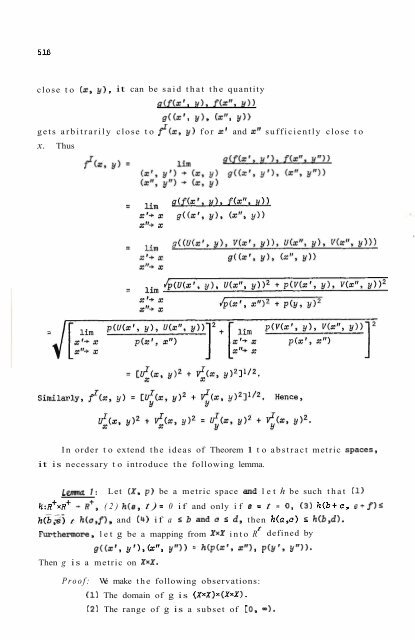Create successful ePaper yourself
Turn your PDF publications into a flip-book with our unique Google optimized e-Paper software.
close to (xY y) it can be said that the quantityg(f(xfy g)* f(xffy 9))g((xty y)Â (xffy 9))gets arbitrarily close to f(xy y) for xf and xff sufficiently close tox. Thus(3) The following is true:(a) g((xf, yfIy (xf, y= h(CÂ c) = DYThe restrictions placed on g and h by the preceding lemma allowfor a more general statement of Theorem 1.Thtotm 2:Let (X, p) be a metric space, and let h be a continu-ous function of Rt x R' into R+ satisfying the conditions on h of Lemma lyas well as the conditions h(a, 0) = a, h(Oy b) = by and ch(a, b) =h(ca, cb) for every c, a, and b in R'. Let g be the metric on XxX de-fined in Lemma 1 by g((xf, yf), (xff, yff) = h(p(xf, xff), p(yf, yff). Thenfor every metrically differentiable function f: (XxX, g) + (XxX, g) givenby f(xy y) = (V(x, y), V(x, y)) for which
















